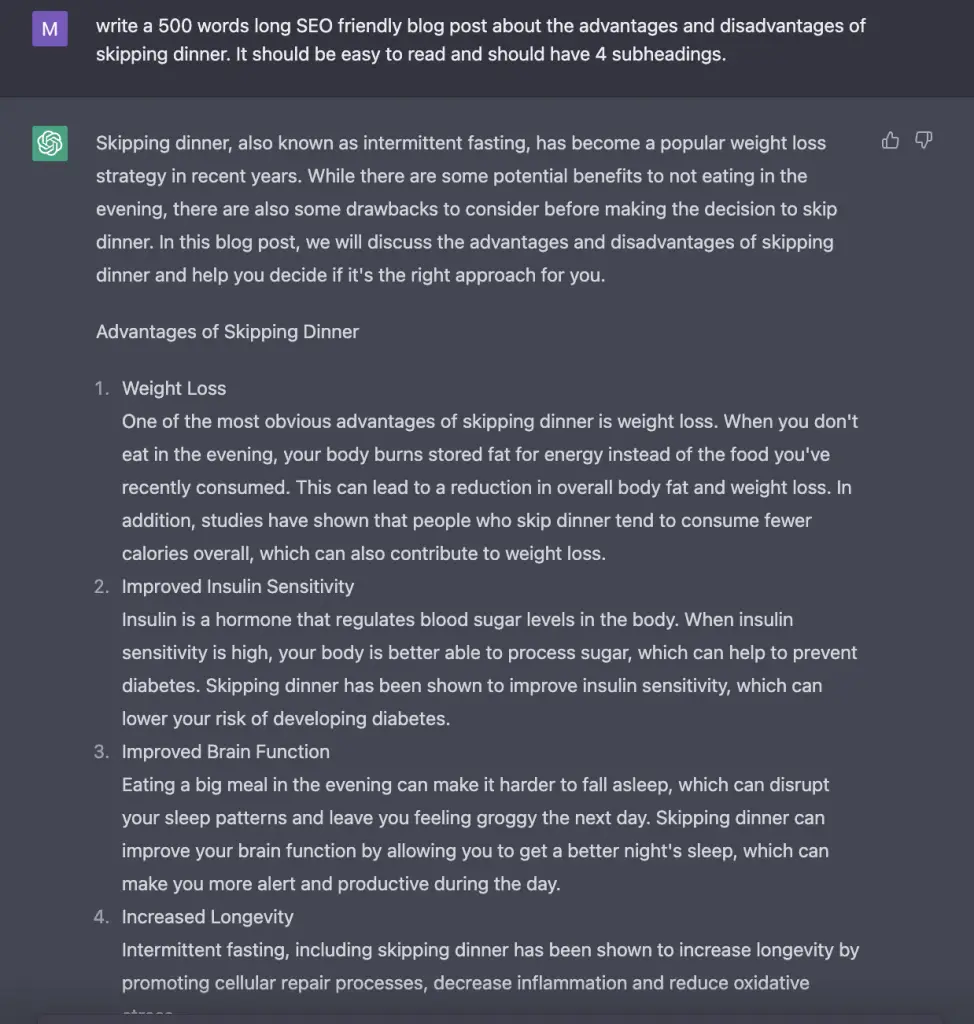How to Use ChatGPT to Help Create Blog Posts
ChatGPT is a really helpful AI tool that can make writing your blog posts a breeze! It’s a natural language processing tool developed by OpenAI that can give you new ideas, help you find new ways to approach a topic, and even write portions of your post for you.
It’s not meant to replace your own creativity and thinking, but to help you out in the writing process and make it more efficient. With a little bit of fine-tuning using your own examples and prompts, you can train the model to write in a way that sounds like you! It’s like having a virtual writing assistant who is always ready to help you out.
Generate Blog Post Ideas
Using ChatGPT to generate ideas for blog post topics is a great way to come up with engaging and unique content that will appeal to your target audience. For a travel blog targeting teenagers, you could use a prompt like “Generate 10 ideas for blog post topics for a travel blog targeting teenagers”.
Here are a few examples of ideas that ChatGPT might generate for this prompt:
- “Budget-friendly European destinations for teenage backpackers”
- “The top 10 adventure activities for teenagers”
- “A guide to solo travel for teenagers”
- “The best hostels for teenage travelers”
- “Traveling with friends: Tips and tricks for a stress-free trip”
These topics are not only tailored to the interests of the teenage audience but also provide practical and useful information that they would be looking for.
Create Blog Post Outline
ChatGPT helps to create an outline for your blog post so that you can organize your ideas and ensure that your content is focused and easy to follow. For example, if you’re writing a tutorial on how to build an eCommerce website, you could use a prompt like “Generate a blog post outline for a tutorial to build an eCommerce website”.
It can generate an outline that includes headings and subheadings, such as “Introduction”, “Choosing an Ecommerce Platform”, “Design and Customization”, “Adding Products and Payment Options”, “Marketing and Promotions”, “Measuring Success and Troubleshooting”, “Conclusion”.
This can give you a clear structure for your tutorial and help you stay on track as you write, making it easier to ensure that all the important information is covered and also helps in keeping your content more readable and useful for your audience.
Write Introduction for Blog Post
Writing an engaging introduction for your blog post is crucial for hooking your readers and setting the tone for the rest of the post. By providing a clear prompt, such as “Write an introduction for a blog post about how AI affects software developers ” you can use ChatGPT’s natural language processing capabilities to generate an introduction that is both attention-grabbing and informative.

Write Conclusion for Blog Post
When using ChatGPT, you begin by providing a summary of your blog post and the main points you want to emphasize in the conclusion. ChatGPT then uses its capabilities to write a cohesive and persuasive conclusion that highlights the key takeaways of your post.
Thus, you can write compelling conclusions that will leave a lasting impression on your readers and encourage them to engage with your content further.
Generate a Complete Blog Post
Yes, you can even generate entire blog post with ChatGPT. Use prompts wisely to create a blog post according to your needs. Foe example, you can try out prompts such as – write a 500 words long SEO friendly blog post about the advantages and disadvantages of skipping dinner. It should be easy to read and should have 6 subheadings.

Overall, ChatGPT is a great resource for bloggers and content creators to have at their disposal.
In conclusion, ChatGPT is a powerful AI tool that can greatly assist in the writing process for creating blog posts. From generating new ideas, to creating an outline, writing an introduction and a conclusion, and even writing a complete blog post, ChatGPT can help you a great extent.





